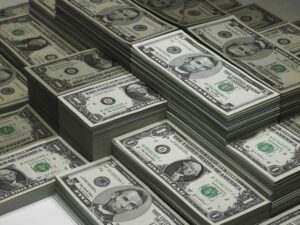
How Recent Central Bank Decisions Are Shaping Asian Currency Trends

Most Asian currencies strengthened on Friday, while the U.S. dollar faced losses following a significant rate cut by the Federal Reserve, marking the beginning of an easing cycle.
Japanese Yen Gains as BOJ Holds Rates and Signals Inflation Rise
The Japanese yen was among the strongest performers, with the USD/JPY pair dropping 0.2% to 142.28 yen. This rise came after the Bank of Japan (BOJ) held its interest rates steady, reflecting expectations of rising inflation and steady economic growth.
Although the BOJ didn’t adopt an explicitly hawkish tone, its forecast for higher inflation raised market expectations for potential rate hikes. Several BOJ policymakers have hinted at upcoming rate increases, particularly as inflation accelerates. Consumer price index data from August showed inflation at a 10-month high, driven by higher wages and increased consumer spending. Despite some weekly losses, the yen remains close to its highest levels of 2024, supporting predictions of continued strength in the coming months.
U.S. Dollar Weakens as Fed Rate Cut Prompts Optimism Despite Mixed Signals
The U.S. dollar weakened slightly in Asian trade, with the dollar index and futures extending overnight losses. The Federal Reserve’s 50 basis point rate cut and the launch of an easing cycle boosted market sentiment, with the possibility of rates dropping by 125 bps by the end of the year.
However, Federal Reserve Chair Jerome Powell offered a less dovish outlook for medium-to-long-term rates, suggesting that the central bank’s neutral rate will remain higher than previous forecasts. This tempered the dollar’s losses, although it had briefly gained after the Fed’s decision on Wednesday.
Chinese Yuan Hits 16-Month High as PBOC Holds Benchmark Rates
The Chinese yuan strengthened, with the USD/CNY pair falling 0.3% to its lowest level since May 2023. The People’s Bank of China (PBOC) maintained its loan prime rate, countering expectations of further rate cuts to boost the economy.
Despite recent data indicating ongoing economic weakness, the PBOC refrained from additional easing measures. Media reports suggested that the central bank had instructed local banks to purchase U.S. dollars, aiming to limit the yuan’s strength, as a stronger currency could negatively impact Chinese exports.
Broader Asian Currency Movements Following Fed Decision
Other Asian currencies firmed following the Federal Reserve’s rate cut. The Australian dollar (AUD/USD) gained 0.2%, approaching an eight-month high. The South Korean won (USD/KRW) also rose by 0.2%, while the Singapore dollar (USD/SGD) slipped 0.1%. The Indian rupee (USD/INR) declined 0.1%, continuing to retreat from record highs set earlier this year.
Never miss any important news. Subscribe to our newsletter.
Related News


USD/INR Slows Down Amid Mixed Indian PMI Data.


USD/INR Rises as Markets Anticipate Fed Rate Decision.


Gold Price Nears Record High Amid Strong Safe-Haven Demand.



USD/INR Gains Momentum Amid Trade Tariff Uncertainty.



Never miss any important news. Subscribe to our newsletter.
Editor's Pick


USD/INR Slows Down Amid Mixed Indian PMI Data.


USD/INR Rises as Markets Anticipate Fed Rate Decision.



